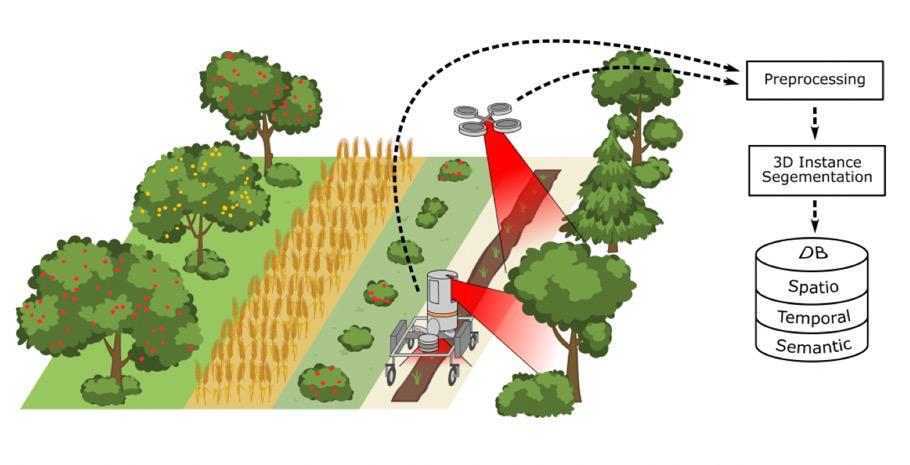Organic farming systems: Agroforestry


Agroforestry systems combine agriculture with forestry, promote biodiversity and protect against soil and wind erosion. A particularly beneficial microclimate and woody roots improve soil structure, retain moisture and nutrients in the soil, and thus protect groundwater and surface water. Until the beginning of the “green agricultural revolution” (from about 1960), these were much more widespread. Tree rows and hedgerows, especially at that time, tended to be disruptive to the use of large farm machinery in large fields, even though they increase the productivity and stability of cropping systems.
Multiple design options for concentrating agroforestry systems while increasing biodiversity.
Agroforestry systems, in addition to having great potential for greenhouse gas reduction, have other advantages in terms of soil conservation and regeneration, increased biodiversity and resilience, and thus future yield security in the face of the climate crisis. These systems are also characterized by heterogeneity, which is due to the high diversity in the conceptualization of individual agroforestry systems. For example, a distinction can be made between fruit, energy, or furniture wood in the choice of woody plants alone. However, an increased level of planning and management of these complex systems is required to make them sustainable and economically successful.
Agroforestry systems offer resilient and soil-conserving as well as soil-building opportunities. Furthermore, if the agroforestry system is designed in a targeted way, e.g. with poplar as fast-growing energy wood, a high climate protection performance is possible, which addresses both CO2 sequestration from the atmosphere and savings during combustion in downstream processes compared to oil or gas, and also offers numerous other benefits for the ecosystem. However, this is just one example of many - productive shrubs and fruit trees can also be integrated to generate revenue in addition to the biodiversity-enhancing effects of (sustainable) cropland management.
Modern technologies as companions and support in sustainable agriculture
In order to increase the attractiveness of ecologically sustainable and soil-conserving cultivation methods and to make it easier to accelerate legal regulations through scientific evidence on the efficiency of the systems, modern technologies, machines and equipment are needed, for example, to be able to work and navigate autonomously and especially in uneven terrain between and under trees. In addition, agroforestry systems also require crop expertise, an extensive understanding of ecosystems, and manual system monitoring and maintenance.














